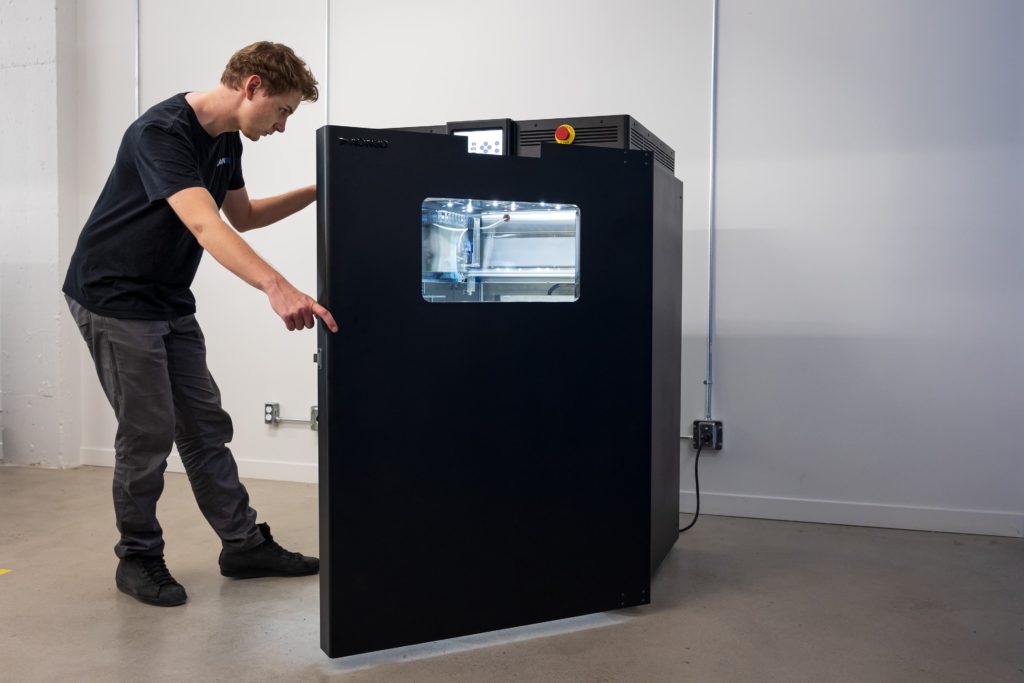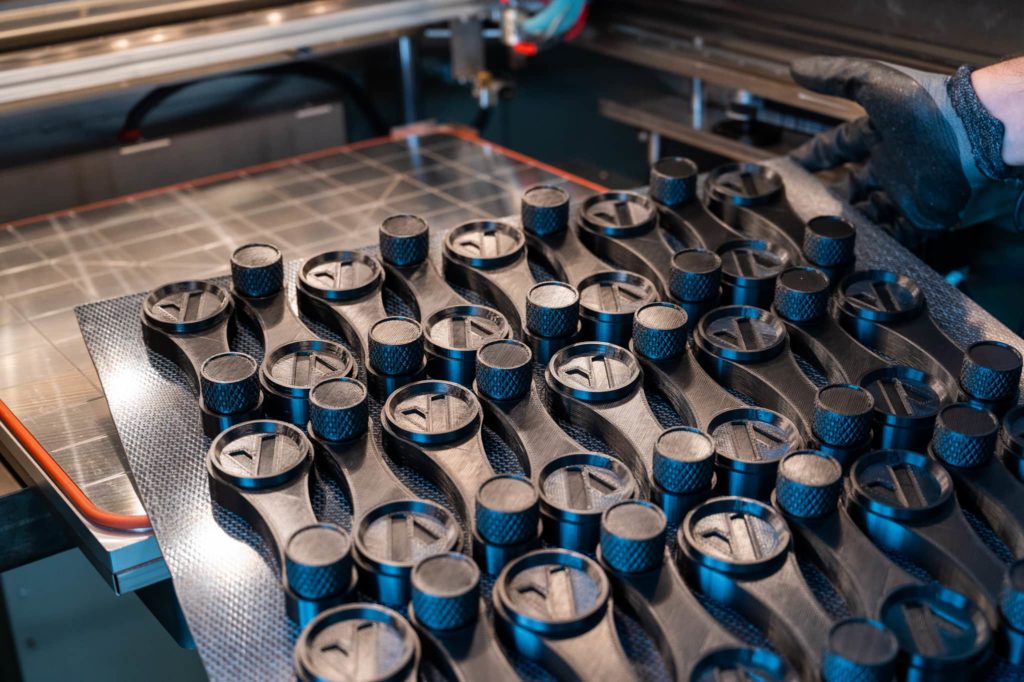3D Printing with PEEK, PEKK, & ULTEM™
Join AON3D's 3D printing application and materials experts for a 30-minute session that covers all the key information
Additive manufacturing has been proven to drive cost savings for businesses. But understanding the return on investment (ROI) for purchasing a 3D printer can be challenging, especially if equipment manufacturers hide the operating costs with additional licensing, service & warranty fees, maintenance, and consumables. To help you make an educated decision, we’ve created this guide to be used when approaching a 3D printer manufacturer. The checklist that we cover in this article will help you evaluate your initial capital expenditure, continuous operating expenditures, and ultimately bring you a step closer to implementing fused filament fabrication (FFF) 3D printers into your workflow.
Calculating Total Cost of Ownership
The total cost of ownership for a 3D printer can be calculated on an annual basis using the following equation with the initial capital expenditure (CAPEX) and operating expenditure (OPEX):
![]()
Note that the machine lifetime is in years and the OPEX is on an annual basis. The cost per part can also be determined for a return on investment evaluation:
![]()
Capital Expenditure
The first step in evaluating your investment is to determine the cost of purchasing the machine hardware, the required software, slicer, and post-processing equipment. These costs are usually fixed regardless of whether your device is idle or operational. Here are the details of these expenses:
- Hardware – unit costs of purchasing an FFF 3D printer along with shipping and installation.
- Software – software to operate the 3D printer and license for slicing software.
- Service – manufacturers may provide services packages that include training videos, online support, product consultations with engineers, and on-site maintenance.
- Material license and upgrades – additional fees for using high temperature thermoplastics through material unlock fees and hardware upgrade costs.
- Pre- & Post-processing equipment – cost for functional modifications like filament dryers, annealing ovens and cosmetic modifications like sanding, polishing, painting, washing stations.

Watch out for these red flags:
| Problem | Questions to ask | |
|---|---|---|
| Software and service packages | Companies may have recurring software update fees that will increase the cost per part produced. Service packages may lack specialized customer support, resulting in greater operating costs. |
Is a software license included in the service package? Does the company have materials scientists and engineers to advise you regularly on optimum part production? |
| Warranty | Manufacturers may not provide a warranty with their service packages, forcing you to either spend extra on a warranty or risk operating expense to repair a faulty printer. | Is a warranty included in the initial purchase price? How much is an extended warranty? |
| Material licenses and upgrades | Manufacturers can implement closed material systems and make you pay an additional fee to use a wider range of materials. Manufacturers may also require hardware upgrade to modify the extruder assembly when printing with different materials. These present an opportunity cost when printing high performance thermoplastics. |
What are the range of high-performance thermoplastics that I can print out of the box? Are there any associated material unlock fees with using a range of printable polymers? |
Operating Expenditure
Once you have determined the required capital, your next step is to evaluate the cost to operate and maintain a 3D printer. Keep in mind that most of the operating expenditures are variable costs that depend on your production rate. These cost items fall under OPEX in the following categories:
- Materials – cost of the polymer and support filaments. These can either be from the 3D printer manufacturer or 3rd party suppliers.
- Labor – cost consideration with ease of use, long and variable machine setup times, cleaning, removing supports, and post-processing.
- Process Consumables – cost of extra hot ends, build plates, adhesives, lubricant and post-process consumables.
- Maintenance – cost of periodic hardware replacements and additional warranty costs.

Watch out for these red flags:
| Problem | Questions to ask | |
|---|---|---|
| Materials pricing | Manufacturers that implement closed materials systems can mark-up the price of filaments significantly since customers are locked into using their proprietary materials. For low-cost polymers like ABS, this mark-up can be up to 8 times the market price. This will increase the operating expenditure, the total cost of ownership for the 3D printer and decrease the return on investment. | Does the printer support the use of 3rd party filaments on their systems? If not what are the price of filaments? Do I need to purchase additional hardware to print high performance materials like PEEK? |
| Single extrusion systems | When printing valuable polymers on a single extrusion FFF printer, you will need to build part supports with the same high-cost materials. This will incur a greater cost per part and manual labor to remove these expensive supports. Dual extrusion systems offer the option of using secondary materials such as water dissolvable supports in conjunction with the primary material of choice. | Does your system offer dual extrusion? What support materials are available for printing? |
Make sure to convert all material prices to a per kilogram unit to compare against different supplier. To convert from imperial volumetric units:
![]()
Conclusion
The price of hardware is not the only consideration when assessing the total cost of ownership for a 3D printer. By selecting a company with the right maintenance and customer support packages, you can ensure considerable cost and time savings. Moreover, the operating expenditures can skyrocket if manufacturers disallow the use of 3rd party filaments and mark up their prices significantly. You can establish a better return on investment by purchasing an industrial 3D printer with an open materials system.
Achieve New Levels of Part Performance & Throughput
3D print the world's highest performance polymers - bigger, faster, and stronger than ever.

